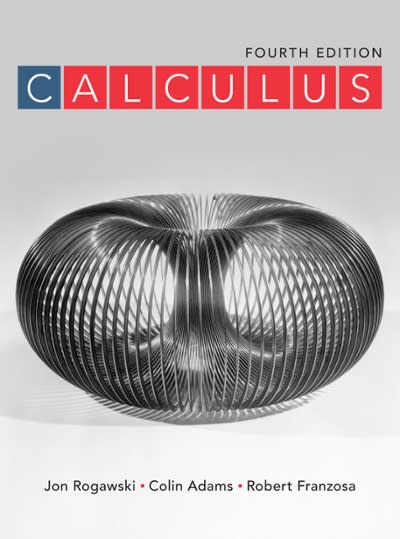Let (mathbf{F}) be a continuously differentiable vector field in (mathbf{R}^{3}, Q) a point, and (mathcal{S}) a plane
Question:
Let \(\mathbf{F}\) be a continuously differentiable vector field in \(\mathbf{R}^{3}, Q\) a point, and \(\mathcal{S}\) a plane containing \(Q\) with unit normal vector e. Let \(C_{r}\) be a circle of radius \(r\) centered at \(Q\) in \(\mathcal{S}\), and let \(\mathcal{S}_{r}\) be the disk enclosed by \(\mathcal{C}_{r}\). Assume \(\mathcal{S}_{r}\) is oriented with unit normal vector \(\mathbf{e}\).
(a) Let \(m(r)\) and \(M(r)\) be the minimum and maximum values of \(\operatorname{curl}(\mathbf{F}(P)) \cdot \mathbf{e}\) for \(P \in \mathcal{S}_{r}\). Prove that
\[
m(r) \leq \frac{1}{\pi r^{2}} \iint_{\mathcal{S}_{r}} \operatorname{curl}(\mathbf{F}) \cdot d \mathbf{S} \leq M(r)
\]
(b) Prove that
\[
\operatorname{curl}(\mathbf{F}(Q)) \cdot \mathbf{e}=\lim _{r ightarrow 0} \frac{1}{\pi r^{2}} \int_{C_{r}} \mathbf{F} \cdot d \mathbf{r}
\]
This proves that \(\operatorname{curl}(\mathbf{F}(Q)) \cdot \mathbf{e}\) is the circulation per unit area in the plane \(\mathcal{S}\).
Step by Step Answer:






